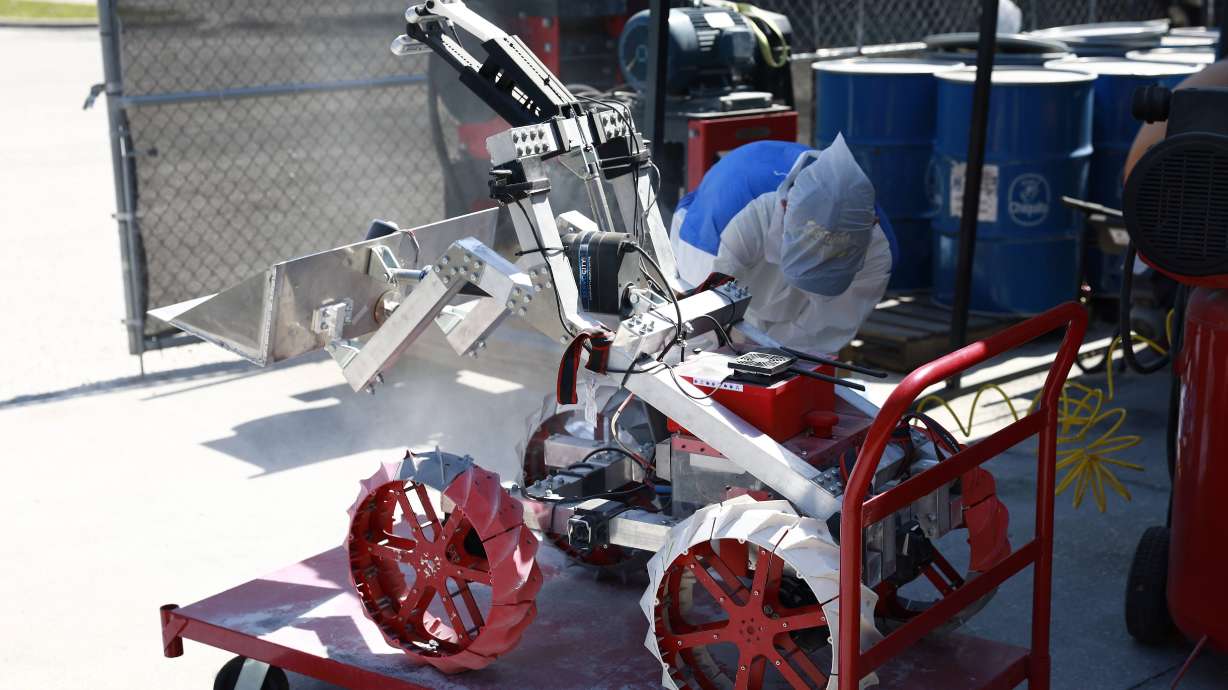Estimated read time: 5-6 minutes
- The University of Utah robotics team won the NASA Lunabotics Challenge grand prize.
- They ended a 15-year winning streak held by Iowa State and Alabama universities.
- The team secured $9,000 in awards, excelling in design, presentation and outreach.
SALT LAKE CITY — The University of Utah robotics club claimed the grand prize at the NASA Lunabotics Challenge at the end of May, ending the previous champions' combined 15-year winning streak.
The Utah Robotics club was awarded the $5,000 Lunabotics Artemis Award for achieving the highest cumulative score in the competition, which required students to design and build a robot capable of performing construction tasks on a simulated moon surface. They also won first place for presentation and demonstration of their work, largest construction, community outreach and sportsmanship, bringing home $9,000 in awards overall.
The win felt like a true underdog story for the engineering students, according to Utah Student Robotics President Brycen Cheney. The team competed against 50 groups from universities all over the United States and became the first group from a university other than Iowa State University or the University of Alabama to win the grand prize since the challenge was introduced in 2010.
After winning third place in the Lunabotics challenge in 2024, Cheney says the engineering club made several changes to improve their chances of winning the next competition. The group underwent changes in leadership, improved their communication systems and grew from nine to 45 members in the past year, who all played a role in the yearlong event.
"There was just constantly, almost every night in the last week, (students) giving their time. From my perspective, I think that's the biggest thing that led us into the win, was really diving into communication engineering, and the fact that we had so many people doing so much leading up to the competition," said Cheney.
The Systems Engineering Design Challenge culminates in a live competition at the Kennedy Space Center each year, but the Lunabotics Challenge is completed over two semesters. Teams must apply the NASA systems engineering process to design, develop and build their lunar robot and submit a STEM engagement report, systems engineering paper and a proof of life video to qualify for the competition.
When building their lunar robot prototype, Cheney says Utah Student Robots had to get creative due to their very limited budget. The team repurposed used materials like wheelchair motors and a PlayStation controller, but also relied on donations from the community to bridge the gap in their budget. It cost around $8,000 to build the robot and $13,000 to travel to Florida for the qualifying competition and final competition.
"I think a huge thing that helped us was the support (we received)," said Jacob Wilson, Utah Student Robotics mechanical lead. "Because of the sponsors, because of the donations that we got, because of the funding that people put in toward this club, we were able to ... be innovative for this type of competition, to better ourselves. They were huge in donating some materials or at least decreasing some prices of materials so we could obtain certain parts of our robot."
Metal Supermarkets Salt Lake City was one of their main sponsors who provided aluminum, alloy steel and square box tubing to build the robot's wheels, digging bucket, chassis and arms.
Utah Student Robotics took their competition preparations a step further by designing and building a home test pit similar to what is used at the Kennedy Space Center to help them train for the competition. This helped them practice using the robot to complete tasks like digging in, dumping and traversing lunar regolith simulant — a substance similar to the dirt found on the moon — as well as dodging craters and rocks.
"(The lunar dirt) is extra rough," said Cheney. "It compacts, it's more dense than water, but it also fluffs up lighter than any powder that I've ever seen. So our most difficult challenge for sure was actually getting the robot to drive on this just insane type of sand."
More than 20 members of Utah Student Robotics participated in presenting and demonstrating their robot's abilities at Lunabotics, several even driving themselves and the robot from Utah to Florida for the competition. Some of the student engineers acted as mission control at the competition, where they had to control the robot with its controller from a separate room, using only a live camera feed to direct its movements to complete tasks. Others were involved in maintaining the equipment between each run so it would perform at its best.
Cheney says his team invested a significant amount of time and effort into the Lunabotics Challenge because it provided an opportunity for them to apply their education in a practical setting.
"In school, you get to learn a lot of things ... but you don't get to actually do engineering," he said. "For us, this was a chance to really learn what it means to be an engineer, to solve a real problem."
The Lunabotics Challenge was created by NASA to let students be part of innovating for their Artemis campaign to explore the moon and learn to live and work there, preparing for eventual human missions to Mars. They plan to land the first woman and person of color on the moon and establish mankind's first long-term presence on the moon.
Many of the engineers on the Utah Student Robotics team share the same passion for space exploration and were excited to contribute to the Artemis campaign through Lunabotics, according to Wilson, who hopes to work for NASA someday.
"There's something that I feel whenever I've gone to Kennedy Space Center that it just I don't think people understand," said Wilson. "It's kind of the feeling that you get when, you're huddled around watching the Olympics. ... I get this huge amount of pride, and this hope for a better tomorrow, the hope that people will be able to come together and we'll all be able to see human accomplishments rise to the occasion."








